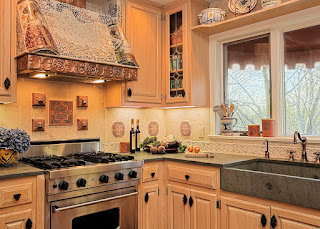In my humble opinion, showers make the bath…they sell the
bath…they drive the bath. Once the
proper engine has been put in place, you get to the good stuff…the
outlets! Showerheads of all types and
sizes, rainbars, handshowers, body sprays, body jets, steam units…the list goes
on and on. To some people, this is
daunting. It shouldn’t be. The plethora of choices and manufacturers
brings the high end shower experience to everyone. Once you’ve established what type of valve
you’re installing, the aesthetic of your bath, and what the water pressure of
your bath can deliver, you’re ready to go shopping!
We can start with showerheads. We are eons removed from the barbaric days
when the only choice you had was a little 4 jet showerhead whose only ability was
to widen or narrow the stream of water.
Now don’t get me wrong…these type of showerheads still exist, and in the
proper location and under certain circumstances (read: low water pressure), are
ideal. However, with that being said, we
introduce the gaudy array of other options open to you. Rainheads (or shower roses as they’re also
known) have gained in popularity tremendously over the last several years. The designs range from the basic 4” Victorian
design to massive 24” (or larger) flush mounted multifunction heads, some with
chromatherapy (light therapy) options.
Some of these heads require three separate volume controls to control! They can utilize ½” or ¾” plumbing. This can dramatically affect the amount of
water flow being delivered. In quite a
few cities and states, there are code restrictions limiting the amount of water
a shower head is allowed to deliver.
Manufacturers have found a way to circumvent some of those restrictions
if you’re feeling in a less than green state of mind. Some of the larger showerheads are now
classified as water sculptures! The end
user has to sign off that they are using the head as a piece of art in their
shower before they can take delivery!
Go
figure...
These showerheads can be mounted
from the wall or the ceiling via a dizzying selection of arms of different
lengths, styles, finishes, and diameters.
Some of the showerheads don’t even require an arm. They flush mount into the ceiling creating a
wonderful rain experience within your shower cabin. The most important thing to remember is to
insure that the valve you have incorporated into your shower set up has the
necessary water flow to deliver to whatever head you’ve selected, and if you
are installing other outlets, that there is enough water to run those pieces
simultaneously.
Handshowers are a mixed bag.
They come in an even wider selection of styles and options than
showerheads.
They are light,
maneuverable, and certainly practical. You
can mount them on a sliding bar to adjust the height and angle of inclination,
or a simple parking bracket. How else
can you easily clean the walls of your shower or the interior of your bath,
without filling up and tossing buckets of water? If
you go by the numbers, and many people do, you’ll find that handshowers deliver
the same waterflow as a basic showerhead…generally in the range of 2.5
GPM. People see this and think,
Wow! Let me use my handshower as my
showerhead as I’m as good as gold! Let
me tell you from experience…this is not a great idea. Handshowers do not deliver the same shower
experience as a showerhead. When used in
conjunction with a tub spout and a pressure balanced valve with an integral
diverter, they generally wear out the diverter assembly inside of a year.
Now please don’t think I’m handshower
bashing…far from it. When used in a
system with a showerhead, they are invaluable for rinsing soap and shampoo from
little children, giving the dog a bath, or in the instance that you are using a
rain head, giving you a multifunction option to work those knots from your back
after a tough day…
Richard K. Segal
1/28/2012
www.princesegaldesign.com











.JPG)
.JPG)
.JPG)
.JPG)
.JPG)
.JPG)


















